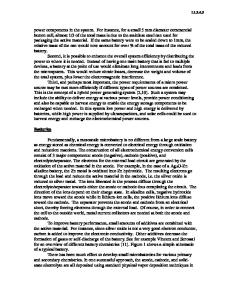High density quantum dots by direct laser fabrication
- PDF / 384,665 Bytes
- 6 Pages / 432 x 648 pts Page_size
- 12 Downloads / 294 Views
High density quantum dots by direct laser fabrication Anahita Haghizadeh1 and Haeyeon Yang1, 2* Nanoscience and Nanoengineering, South Dakota School of Mines and Technology, Rapid City, SD 57701, U.S.A. 2 Center for Security Printing and Anti-Counterfeiting Technology, South Dakota School of Mines and Technology, Rapid City, SD 57701, U.S.A. 1
ABSTRACT We report a study of direct laser fabrication that produces quantum dots with their density higher than the critical density without appearance of large clumps. Atomic force microscopy is used to image GaAs(001) surfaces that are irradiated by high power laser pulses interferentially. The analysis suggests that high density quantum dots be fabricated directly on semiconductor surfaces during epitaxial growth processes. * Corresponding author; e-mail: [email protected]
INTRODUCTION It is desirable for quantum dots to have a high density due to the potential for various opto-electronic device applications. For example higher solar cell efficiency is expected for quantum dot solar cells (QDSC)[1] when the dot density increases due to larger absorption of solar light. These quantum dots are typically fabricated by the Stranski-Krastanov (S-K) growth technique. The S-K method is based on relaxation of strain that is accumulated during the 2dimensional wetting layers which have a different lattice constant, typically larger lattice constant than that of substrate.[2, 3] The self-assembly of quantum dots occurs when the energy reduction due to the relaxation exceeds the energy of forming the additional surface area of dots. These dots have different electronic states. In order to take advantage of the new electronic states, it is desirable to achieve high dot density as high absorption is possible from high dot density. However, the self-assembled quantum dots have been reported to have optically detrimental defects such as large clumps when the density exceed a certain value, a critical density. Recent research on intermediate band solar cells based on self-assembled quantum dots, fabricated by the so-called Stranski-Krastanov (S-K) growth technique, indicated that there is a critical density of 7x1010 dots/cm2, above which detrimental large clumps (base diameter of around 60 nm or larger) begin to show up.[4] Other technique such as droplet epitaxy showed promise of achieving extremely high density of 7.3x1011 dots/cm2 without clumps.[5] We present atomic force microscope (AFM) observations of relatively high density of dots exceeding the dot density of 7x1010 dots/cm2 by a single application of interferential irradiation of laser pulses on the GaAs(001) surfaces. EXPERIMENT In order to fabricate nanodots, transient thermal grating was created on the surfaces by overlapping two laser pulses on the surface, which creates a laser intensity modulation on the
2025 Downloaded from https://www.cambridge.org/core. Columbia University Libraries, on 22 Aug 2017 at 04:59:33, subject to the Cambridge Core terms of use, available at https://www.cambridge.org/core/terms. https:
Data Loading...











